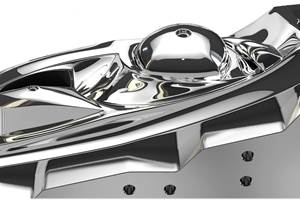In the Trenches: Taking Action
In repair, there are no mistakes, just educational experiences.
In a moment of frustration, someone recently said to me, “If they don’t know what they’re doing, they shouldn’t be doing it.” On one hand, that sounds perfectly reasonable, but on the other hand, if nobody does anything they don’t know how to do, almost nothing will get done.
To illustrate, I’ll share something one of my sisters recently sent to me: “There was an important job to be done, and Everybody was sure that Somebody would do it. Anybody could have done it, but Nobody did it. Somebody got angry about that because it was Everybody’s job. Everybody thought that Anybody could do it, but Nobody realized that Everybody wouldn’t do it. It ended up that Everybody blamed Somebody when Nobody did what Anybody could have done.”
I prefer a guy make a mistake trying something instead of refusing to take action because he was unsure of what to do. I remember my dad telling a story about a young executive whose business blunder cost the company $2 million. He went to the CEO and said, “I guess you’ll be expecting my resignation.” The CEO responded, “Why would I want your resignation? I just spent $2 million on your education.”
That story eloquently demonstrates the value of mistakes. In manufacturing it’s often said that we don’t have problems, we have opportunities. We need to apply that logic and mindset to mistakes and say, “We don’t have mistakes, we have educational experiences.”
Repair “Mistakes” and Opportunities
What’s the worst that can happen if your attempt at repair is unsuccessful? In all my years in mold repair, I can report that I’ve never seen a mold completely scrapped because of an unsuccessful repair.
I’ve been known to say a few times, “It’s my job to come up with the hairbrained ideas that free everyone else up to think of the real solution.” And more than once, my hairbrained idea has proven to be the solution.
You have to say to yourself, “It won’t work the way it is, so I can’t make it anymore useless.” The worst that can happen is you still have a broken tool. However, you’re also closer to the repair, because you’ve already found one avenue that is not the road to recovery. That in itself is something learned.
Taking action results in a few clear, positive outcomes:
1. Opportunity for success. The odds of success are astronomically in favor of trying something over doing nothing. If you do nothing, you have zero chance at success.
2. Opportunity to challenge your creative thinking abilities. Repairs are often unique, which makes them more difficult to estimate than straight building or machining. Yet, given enough time, the variety of repairs will fall into general categories. For example, there are crush, wear, rust and environmental problems. Each repair completed within these categories will build the knowledge base necessary to create the technique for the next repair.
3. Opportunity to practice and develop your skills. For example, I saw first-hand the advantage of minimizing vibration and movement when holding a workpiece and removing galled or “stuck” tooling. Over time, several techniques were developed to drive home that lesson and focus more of the energy expended toward accomplishing the task.
4. Opportunity to learn. You will inevitably learn something. There’s a reason they call it the “school of hard knocks.” Even unsuccessful attempts teach a lesson. The successes will build your confidence, and confidence goes a long way in getting you off the starting blocks when the next challenge comes around.
5. Opportunity to return to production. You are that much closer to returning to production.
I can recall saying to one of my sons, “I’ve never done anything I couldn’t do yet.” Depending on how it is parsed, this could mean any number of things, but my intent was a tongue-in-cheek way of saying that all I’ve accomplished has been the result of doing something rather than nothing. Just try!
The point of my subdued rant is to encourage repair technicians to grab the bull by the horns and do what they are in place to do.
Related Content
The Ins and Outs of Hot Runner Temperature Control
A training checklist that explains the why and how of proper hot runner temperature control and system management.
Read MoreSurface Finish: Understanding Mold Surface Lingo
The correlation between the units of measure used to define mold surfaces is a commonly raised question. This article will lay these units of measure side by side in a conversion format so that companies can confidently understand with what they are dealing.
Read MoreHow to Achieve the Best Mold Finish
A look at factors that impact the polishability of tool steels and recommendations for obtaining a high-gloss finish.
Read MoreRead Next
In the Trenches: Mold Repair
In this multi-part series of articles, contributer James Bourne, a tool repair supervisor and freelance writer, shares his own personal struggles in the business, as well as lessons learned and tricks of the trade garnered along the way.
Read MoreAre You a Moldmaker Considering 3D Printing? Consider the 3D Printing Workshop at NPE2024
Presentations will cover 3D printing for mold tooling, material innovation, product development, bridge production and full-scale, high-volume additive manufacturing.
Read MoreReasons to Use Fiber Lasers for Mold Cleaning
Fiber lasers offer a simplicity, speed, control and portability, minimizing mold cleaning risks.
Read More





















